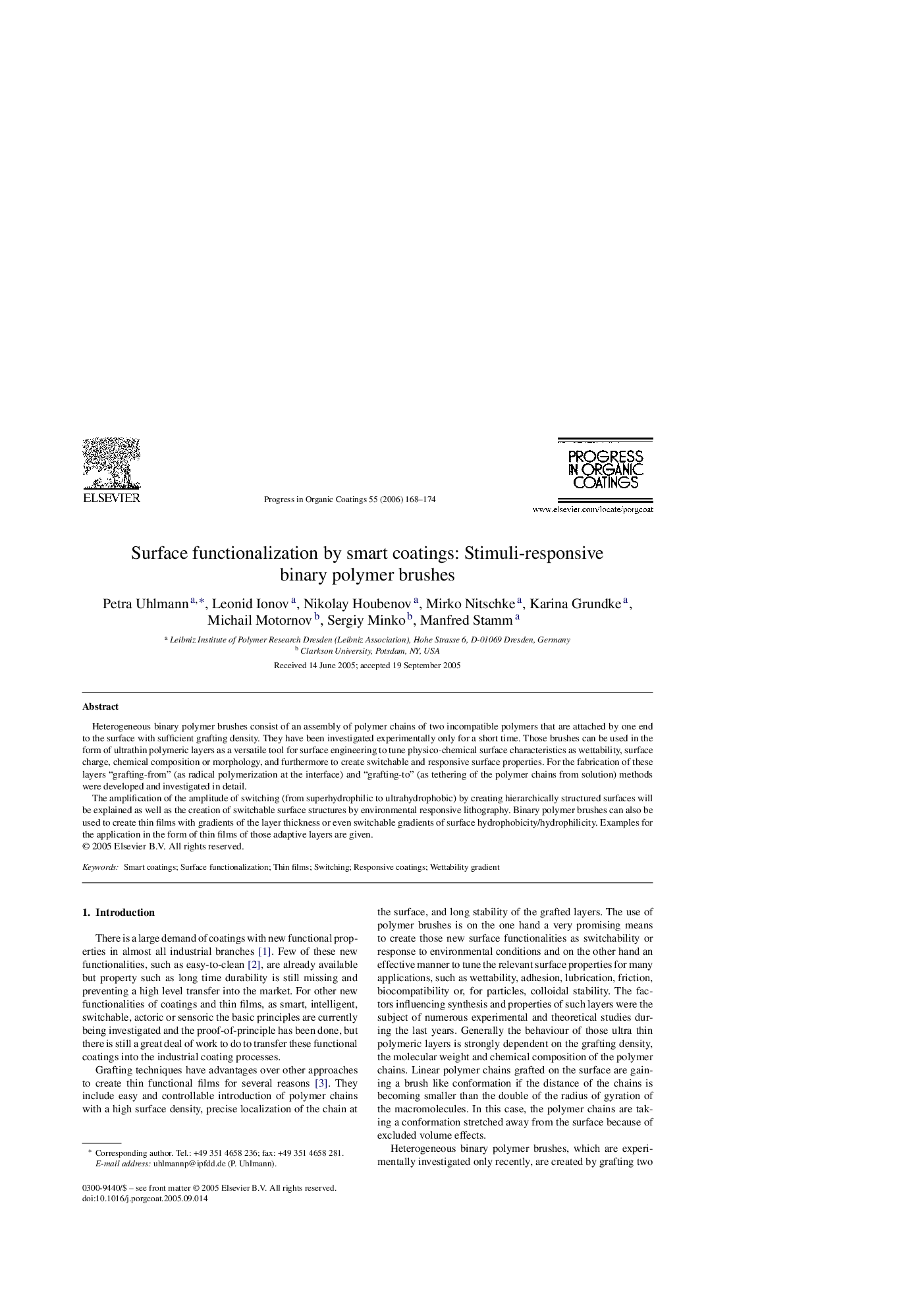| Article ID | Journal | Published Year | Pages | File Type |
|---|---|---|---|---|
| 694090 | Progress in Organic Coatings | 2006 | 7 Pages |
Heterogeneous binary polymer brushes consist of an assembly of polymer chains of two incompatible polymers that are attached by one end to the surface with sufficient grafting density. They have been investigated experimentally only for a short time. Those brushes can be used in the form of ultrathin polymeric layers as a versatile tool for surface engineering to tune physico-chemical surface characteristics as wettability, surface charge, chemical composition or morphology, and furthermore to create switchable and responsive surface properties. For the fabrication of these layers “grafting-from” (as radical polymerization at the interface) and “grafting-to” (as tethering of the polymer chains from solution) methods were developed and investigated in detail.The amplification of the amplitude of switching (from superhydrophilic to ultrahydrophobic) by creating hierarchically structured surfaces will be explained as well as the creation of switchable surface structures by environmental responsive lithography. Binary polymer brushes can also be used to create thin films with gradients of the layer thickness or even switchable gradients of surface hydrophobicity/hydrophilicity. Examples for the application in the form of thin films of those adaptive layers are given.
